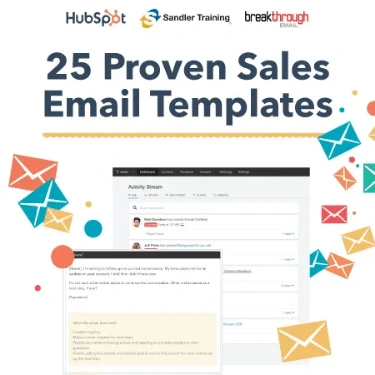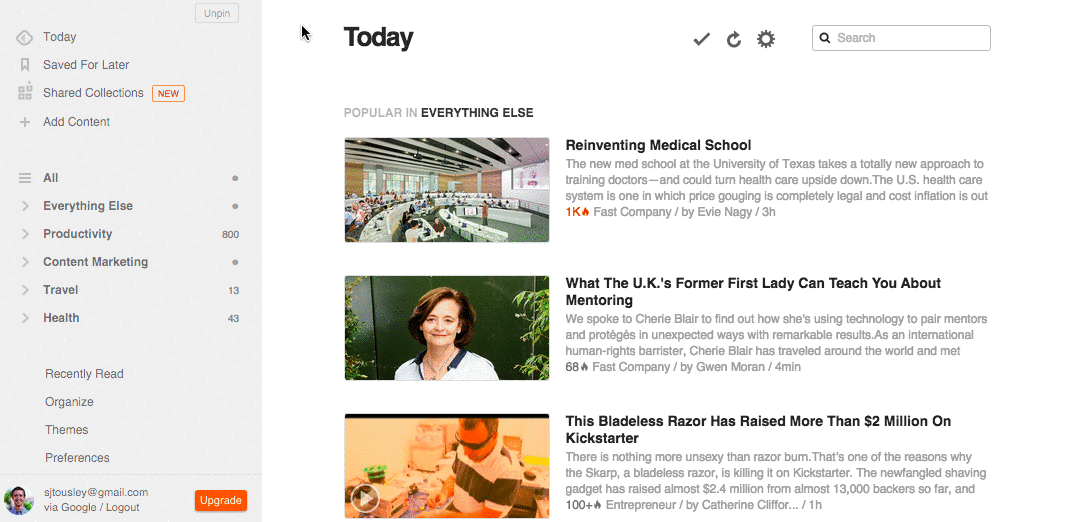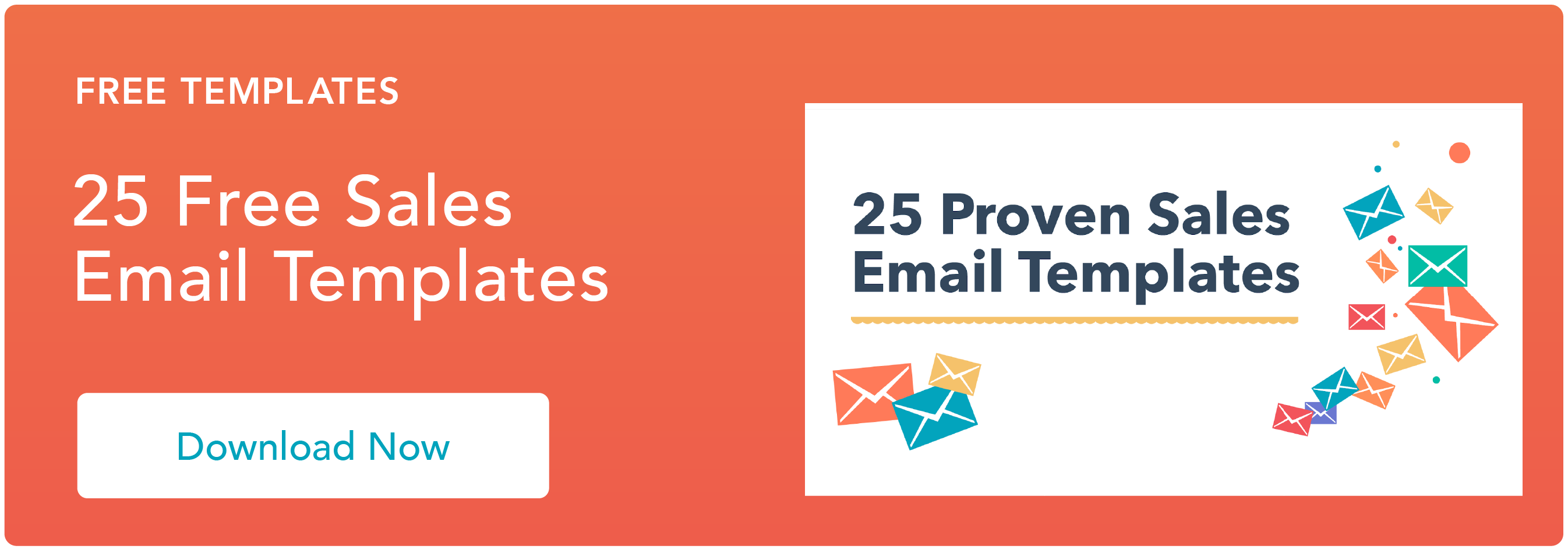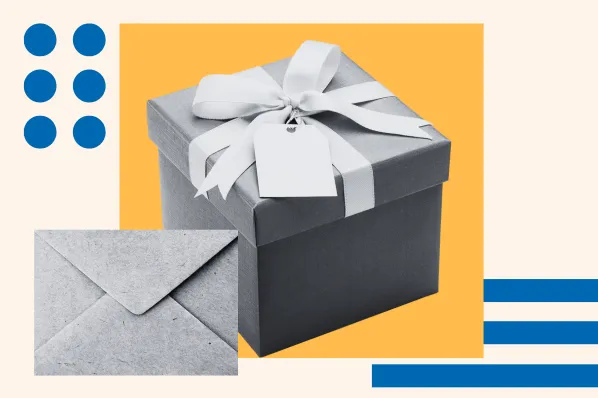Email marketing ROI can be as high as 3600%, generating $36 for every $1 spent. An email sequence adds even more value because of the time it can save. Email sequences have been found to generate 320% more revenue than non-automated emails.

Like most small businesses, we at FEED. The Agency previously earned 90% of new clients from referrals. If we had more time, we‘d generate leads through inbound marketing. If we had more money, we’d purchase $30,000+ in advertisements or sponsorships.
But we had limited time and money. So, we had to come up with a different solution — email sequences.
As a result, we built a follow-up email sequence that generated $100,000 in 30 days. I'll pull back the curtain of that process (including the free HubSpot tools used) as well as show email sequence examples to inspire you to start creating email sequences for yourself.
What is an email sequence?
An email sequence is a series of automated emails that are sent automatically to a prospect, user, or customer using automation software. The emails are sent based on predetermined criteria, such as a time delay or action being met. Common sequences include a welcome email sequence, an onboarding email sequence, and a lead nurturing email sequence.
Why are automated email sequences so powerful? If you build your emails out beforehand and set them up with email marketing automation, you can follow up with prospects at scale without being the one to click the “send” button over and over.
At FEED, we built our own follow-up email sequence — using the free Email Templates tool from HubSpot Sales — that generated $100,000 in 30 days. Our total revenue increased by 215% since we started sending these templates in a sequence.
To create an effective email sequence, you'll need a few tools to get started:
- Lead Generation Form. Before you consider your content, the platform you‘ll use, or how you‘ll segment your lists, you‘ll want to decide how you’ll collect the information you receive from these emails. Think of it as working backward from the end goal of sending the email.
- Email Builder. Choosing an email-building tool that has list segmenting capabilities, an intuitive design interface, and a reasonable send limit for your pipeline will be the top priorities you'll want to look into.
- Subject Line Checker. The subject line is the first part of your email sequence that your readers will see — whether they open the email or not. So, take a little extra time to get it perfect by using a subject line testing tool.
HubSpot's Email Marketing Tool is a great place to start building personalized email sequences that target your prospects or customers.
.webp)
Try HubSpot's Email Marketing Tool Free
How long should an email sequence be?
There‘s no set length for an automated email sequence. The duration and number of emails will depend entirely on the buyer persona, the buyer’s journey stage, and your average sales cycle length.
Let‘s say you’re creating a nurturing email sequence to prompt a prospect to take action. An email sequence like this should do a few things:
- Educate them along their path to purchase.
- Handle any objections they have along the way.
- Establish your authority and credibility in the industry (and thus make you their provider of choice when they're ready to buy).
- Keep you top-of-mind until they're ready to buy.
Here's an example from food photographer Regan Baroni, who sells photography services and online courses to restaurant owners:
.webp)
How long is your buyer shopping around? Where are they at in that process based on what you already know about them (actions they've already taken on your site)? What information do you need them to know during that time?
Understanding these factors will help you determine how long a sequence should be.

25 Free Sales Email Templates
Save time, find new ways to reach out to prospects, and send emails that actually convert.
- First-Touch Emails
- Follow-Up Emails
- Break-Up Emails
- Full Email Sequence
How to Create an Email Sequence
Now that you have an idea of what email sequences are, the situations in which you‘d use one, and how long a sequence can/should last, let's talk about how to create personalized email sequences for your business.
1. Determine the sequence's purpose.
Generally, most email sequences have the broader goal of earning new business. However, there are many ways of going about “earning new business,” and context matters for delivering the right message at the right time. Honing in on your reasons will help as you structure your automation logic, craft your emails, and measure success.
For example, let's say you want to build a straightforward follow-up sequence designed to convert a conversation into a demo. In this case, success would mean the prospect booking a meeting through your scheduling software.
Alternatively, you might want an automated nurturing campaign to trigger after they download an ebook or content offer. Success for this would mean turning them into a sales qualified lead (SQL), so you'd provide information and opportunity for them to take action and meet your SQL criteria.
The opportunities for targeted experiences are endless if you're strategic about it.
2. Identify the enrollment criteria (or trigger) for the sequence.
Automation software can't read minds (yet?); just like any tool, we have to tell it when and how to work.
This is where enrollment criteria come in. When you set up your sequence, you'll specify the conditions that must be met for the automation to trigger. For a sales follow-up email sequence, it can be as simple as manually enrolling them using your CRM or email marketing software.
Alternatively, you can use more advanced criteria if your automation software allows it. Examples of triggers include:
- When a contact fills out a form.
- When a contact visits a particular page.
- When a contact enters a new lifecycle stage.
- When a contact books a meeting.
And many more. If your CRM records it, and if the data in your CRM is reliable, you may be able to automate around it. (If you're using HubSpot, you can find more information about HubSpot's enrollment criteria here.)
3. Determine the duration of the sequence and the number of emails required.
About 215,298,720 emails are sent per day. There‘s a lot of noise in people’s inboxes; if you want your emails to move the needle on your business, it's important to be strategic about your touchpoints.
For example:
- If I know the average sales cycle for my buyer persona is 30 days,
- And I want to have twice-a-week touchpoints,
- I'd need to map out around eight emails.
This provides a framework to plan the messaging necessary to get the prospect from A to B.
On the other hand, if it's a follow-up email sequence from a face-to-face conversation, you might consider fewer emails before sending yourself a reminder to reach out by phone (yes, this can be automated, too!).
4. Write the emails for the sequence.
Once you have your framework and you‘ve outlined which emails are needed, it's time to get pen to paper. Here are some resources to help you out.
Each email will be sent to multiple prospects at different times, so your emails should be evergreen, and the information you include should be universal enough to apply to any prospect who fits the criteria you set. However, personalization tokens can be added to provide that custom touch.
The delicate balance between universal and specific is how you can scale while still making each prospect feel as though you're talking directly to them.
5. Build the emails using email software.
Once you have all your emails in text form, it's time to put them in the system.
Once you have all your emails in text form, it's time to put them in the system.
With sales emails, it's often better to keep things simple, as if a rep sent the messages personally from their inbox. Marketing emails, though, have more room for branding flair and eye-catching visuals.
Regardless of your approach, you'll be able to copy and paste your text into your email builder. Putting them in your system allows you to tell your automation software what to send.
6. Set up the automation.
Consider this part of the process as instructing your automation software, step by step, how to execute the tasks you want it to. This includes:
- Specifying the enrollment criteria you decided on.
- Designating which actions (e.g., email sends) to perform and when.
- Setting up how much time should pass between each action and what to do when specific scenarios happen (if/then logic).
Here are some resources for working with HubSpot's automation tool.
7. Test the sequence.
Take it from me — testing emails helps save a lot of heartache. Ensure that the emails look good across devices. Email open rates on desktop are declining, so don't ignore testing on mobile.
More than half of consumers say that they'll go somewhere else if an email is not personalized, so also remember to check that the personalization tokens are functioning correctly.
The success behind this sequence comes from its ability to influence the psyche of your prospect. Pride, gratefulness, and regret are powerful feelings that can prompt people toward actionable steps.

25 Free Sales Email Templates
Save time, find new ways to reach out to prospects, and send emails that actually convert.
- First-Touch Emails
- Follow-Up Emails
- Break-Up Emails
- Full Email Sequence
Email Sequence Examples
While we sent a follow-up email sequence, there are a few types of sequences you can send to engage your prospects.
9 Email Sequence Examples
While we sent a follow-up email sequence, there are many types of email sequences you can send to engage your prospects.
1. Nurturing Email Sequences
A nurturing sequence introduces the prospect to you, your company, and your offerings. It can also be referred to as a welcome email sequence. Viewers may have downloaded an ebook or opted into a content offer, but that doesn‘t mean they’re sales-ready.
A nurturing sequence is designed to get them, thereby providing social proof, handling objections, and establishing value.
Example of an email in a nurturing sequence from Moment:
.webp)
This email sequence is best for companies that have short sales cycles, like many consumer packaged goods or even simple B2B digital technologies.
To have the best results with a nurture email sequence, you‘ll want to focus on educating your prospects rather than selling to them. This builds trust and familiarity between your brand and the recipient. When they’re ready to buy, you'll be top of mind.
2. Onboarding Email Sequences
After you buy a service, what do you want to see happen? You want to receive something, even if you know that your actual purchase is a delayed transaction. This is where onboarding email sequences come in.
Example of a Pinterest management onboarding email sequence from Writing From Nowhere:
.webp)
This can be a basic welcome email that ushers new clients or customers into your service, or it can contain important next steps for onboarding. These email sequences can be plain text and direct, and you can expect high open rates since people are already expecting to hear from you.
3. Engagement Email Sequences
An engagement email sequence uses email to build rapport with prospects. The idea is to get them engaged with your content to build interest and keep your organization top of mind.
This type of sequence might help you identify engaged subscribers who open, click, and take action on emails so that you can enroll them in other sequences tailored to their specific journey.
Example of an email in an engagement sequence from A Kids Book About:
.webp)
The engagement email sequence works well for brands that have frequent events. These emails are best used once the relationship has been established and the recipient looks forward to your emails.
Ideally, an engagement email sequence should be sent after there has been meaningful engagement on past email sequences.
4. Conversion Email Sequences
This sequence is used when you‘re asking your prospect something (e.g., booking a meeting or scheduling a demo). This means that you‘ll focus the entire copy around a single call-to-action, and you’ll use the sequence to get the recipient to take that action.
Example of an email in a conversion sequence from Yokel Local:
SaaS companies and other service providers who rely on booking calls and demos to close deals will find value in a conversion email template. This type of email should be the final one in your email sequence because it no longer educates or inspires the prospect — instead, it asks for their time.
So, make sure this email sequence is reserved for those who have opened, engaged, and even responded to past emails.
5. Follow-up Email Sequences
Just because a prospect doesn't respond to a sales outreach email doesn‘t mean they're not interested. They may need a few “impressions” before noticing and taking action.
A follow-up email sequence loops back and touches base with your prospect after a few outreach attempts.
.webp)
Just about every business can benefit from a follow-up email sequence. If you notice your prospects have had otherwise great engagement and open rates but still haven‘t taken action on a conversion email sequence you've already sent, a follow-up message can be a nudge in the right direction.
6. Re-Engagement Email Sequence
Has someone joined your list and gone cold? Once someone stops opening your emails, they're not likely to come back on their own; they need to be re-sold on why your messages are worth their time.
Try a re-engagement sequence that offers them something enticing, like this example from HubSpot Academy:
.webp)
7. Reminder Email Sequences
Whether a lead has booked a demo, signed up for a webinar, or even snagged a seat to an event, your organization has a chance to delight that individual (and possibly earn their business). However, you can't provide that delight if the lead forgets to show up.
Reminder emails are a low-friction way to ensure that the lead doesn't forget about the event or appointment and also provide them with any necessary logistical details.
Example of an email in a reminder sequence from Dyspatch:
.webp)
The key to making these sequences work is to keep the subject line simple, the copy straightforward, and the call to action prominent.
8. Re-Engagement Email Sequence
To get results from email as a channel, you naturally need a healthy database. Over time, however, email addresses change, and prospects lose interest. The average email database loses contacts at around 25% per year, so even if you‘re generating new leads at a rapid rate, you'll naturally get some data skew from uninterested or deprecated contacts.
As a last-ditch effort to win back some of those contacts, you can deploy a re-engagement sequence. This will help you keep your email list healthy and accurate.
Example of an email in a re-engagement sequence from Return Path:
.webp)
It might seem counterintuitive to intentionally ask people to opt out of your email subscription, but it can do wonders for your engagement metrics. Rather than having a bloated list of contacts, you can become laser-focused on the individuals who are interested in the email content they receive from your company.
9. Ongoing Educational Content
If you invest money in free educational content, then you want to make sure that prospects see it. Ideally, new customers will come into contact with your content marketing, and it will bring them to your email list.
However, no customer has seen ALL of your content. Even once someone has subscribed to your email list, your free content can help nudge them towards your paid offers.
These ongoing educational emails are powerful for driving traffic to your content marketing and can send subscribers to:
- Webinars.
- Blog posts.
- Video series.
- Podcasts.
Example of educational content from Nadalie Bardo:
.webp)
The Email Sequence That Made Us $100,000
Ready to see this sequence in action? Here's how we earned $100,000 in 30 days.
The following email sequence draws in prospects by catering to their pride, providing them with content they can be grateful for, and leaving them with regret if they miss the opportunity.
Step 1. Find prospects who are mentioned in the news.
As a branding agency in the healthcare industry, the majority of our clients are doctors or dentists. The first step we take in this sequence is to find news stories that mention doctors. Once we can secure a list, we reach out to congratulate them. Not only does this warm up the initial email and catch their attention, but it also plays on their pride.
Google Alerts and Feedly are two resources for monitoring the news. Google Alerts allows you to monitor the web and receive email notifications for particular keywords. Creating a Google Alert is simple. Type the keyword and save the alert to send it to your email address.
In the example below, we track the keyword “orthopedic surgery.” After entering the keyword and my email address, I click “Create Alert.” Now, I will receive an alert any time the news mentions an orthopedic surgery or orthopedic surgeon.
.gif)
Feedly is another tool to use when monitoring news topics. It is a space where you can privately organize and research topics relevant to you. It is an alternate tool Feed the Agency uses to discover doctors mentioned in the news.
To use the platform, add websites to your “feed.” When a website you‘re monitoring publishes a new article, you’ll receive an alert within the platform.
For example, a website we follow in our industry is KevinMD.com. To add it to our feed, I:
- Click “+Add Content.”
- Enter the URL in the search bar: KevinMD.com.
- Click the green “+Feedly” button.
- Click “Add.”
.gif)
In those four steps, we added KevinMD to our feed. TEDmed.com, AdWeek, and Advertising Age are other websites we've used to acquire new customers. They are examples of other websites I have added to my Feedly account.
To view the content from these websites, I click on the “Health” tab, where all the content appears at once.

Step 2. Send an email congratulating them on their news coverage.
Once you find a prospect, send the first email using the free email templates builder from Sales Hub.
Here's our best-performing initial email template:
Free to chat?
Dr. [Last name],
Because I work so much with [targeted industry], I constantly follow industry news. Recently, I noticed that you've [insert company action].
Usually, when that happens, [insert business issue] becomes a priority. That's why I thought you might be interested in finding out how we helped [similar firms] get going quickly in their new direction — without any of the typical cookie-cutter approaches to marketing.
Check out our patient advertising and brand campaigns here. If you‘d like to learn more, let's set up a quick call. Schedule 15 minutes here on my calendar.
Regards,
Matthew
P.S. If you're not the right person to speak with, who do you recommend I talk to?
Typically, this email garners two reactions — a reply or time scheduled on my calendar. If I don't receive a response in 24 hours, I follow up with a second email.
Step 3. Send a follow-up email with helpful content personalized to their industry.
If you can add value to someone's life or profession, it will boost credibility and strengthen the relationship. Because of that, this email template always drives a ton of responses.
For example, I send physicians a valuable branding survey tool we use to help clients differentiate themselves.
Here's what that might look like:
Free physician branding tool
Hello Dr. [Last name],
I‘m following up on my previous email with a free tool I think you'll love.
It's a brand analysis survey I created just for you (literally, your name is on it) that will help you understand how your practice is different from other doctors in [insert their city].
Click here [add hyperlink to survey] to begin the brand differentiation analysis survey. When we speak, I'll benchmark your responses against the top physician brands around the country.
I'm sharing my calendar (click here) so we can schedule a convenient time to discuss.
Enjoy your weekend,
Matthew
Add names whenever possible. Adding a doctor's name to the survey caused our response rates to skyrocket. Although it was a small tweak, personalization is a powerful tool. If this email fails to drive prospects to reply or book time on my calendar, I'll send a second follow-up email using the “Trying to Connect” email template.
Step 4. Send the “Trying to Connect” email sequence template.
For prospects who have yet to respond, I'll follow up with this email template:
Trying to connect
Hi Dr. [Last name],
I‘m sorry we haven't been able to connect. Again, I know how hectic things can get at work and with family.
I would be available for a call during weekends or before or after work hours if that‘s easier for you. I don't mean to bug you, but I do want to help you manage your team so you can exceed your goals of [insert custom goals].
To schedule a time on my calendar, just click here.
Best,
Matthew
This single email has the highest response rate of all the templates. Why? Offering extended hours could be the key.
Without mentioning explicit hours, prospects might automatically assume that scheduling times would be during their business hours. Offering times outside of regular “9 to 5” hours can push prospects to action.
Step 5. Send the final “Permission to close your file?” follow-up email template.
When struck with silence, you want to send a final email that prompts them to respond. We handle this with our final follow-up, where we ask for permission to close the file.
Permission to close your file?
Hi Dr. [Last name],
I'm writing to follow up. We are in the process of closing files this month.
Typically, when I haven‘t heard back from someone, it means they are either really busy or aren‘t interested. If you aren’t interested, do I have permission to close your file?
If you are still interested, what do you recommend as a next step?
Thanks for your help.
Regards,
Matthew
This email performs well. Once an opportunity feels like it‘s about to slip away, some prospects might jump on it. Once you’re able to drive a prospect's reaction to reply or close out the communication, the last step is measuring the performance of the email templates.
Step 6. Improve your email sequence templates by measuring their performance.
HubSpot's free email templates tool allows you to measure open rates and click rates. At Feed. The Agency, we constantly measure email performance and make improvements as we see fit.
.webp)
Measuring email performance will help you understand what templates are performing best versus what needs improvement. Without this tool, it would be exceedingly difficult to make decisions due to the lack of data.
The return on this sequence has been tremendous, but we're still early in the process. We will continue to test these templates until we discover the “perfect” email.
We were able to close $100,000 in just 30 days. These templates give you the potential to get similar results. Try it out. Create a free HubSpot account, open the email templates tool, and click send.
Email Sequence Best Practices
No matter the kind of email sequence you're creating, there are some best practices you have to keep in mind to ensure that you get the best results possible. Here are five of them:
1. Set SMART goals.
Before starting an email sequence, ask yourself: What do I want to achieve with this?
All email sequences have goals. For example, a lead nurturing email sequence should help you build relationships with your customers, while an abandoned cart email sequence should increase sales.
When setting goals for your sequences, make sure they're SMART — Specific, Measurable, Achievable, Relevant, and Time-Bound. This framework ensures that you set realistic goals and achieve them on or before the deadline you set for yourself.
2. Outline each email sequence.
Creating an outline will help you determine how many emails will be in each sequence. Write down everything you want to include in your emails. When you‘re done writing out your ideas, group similar topics into categories.
For example, if you're teaching your subscribers how to do something, think about the most important thing they need to know about that topic and work backward from there in the following emails.
When you're happy with the way your sequence is organized, you can start writing the content.
Note: Your initial outline will need tweaking as you craft your emails. Outlines aren‘t meant to be perfect; they’re meant to give you a clear direction as you craft the email sequence.
3. Write evergreen content.
The great thing about automated email sequences is that you don‘t have to write variations of the same email to create them. Instead, make your email content evergreen and relevant to everyone in the customer segment that’ll receive the sequence.
Important reminder: You‘ll need to avoid trendy jokes or information that won’t be relevant in the next couple of months. If you include these, you'll have to constantly edit your email sequence — which defeats the purpose of saving time while providing your customers with a personalized experience.
Example of evergreen email sequences from HubSpot Academy:
.webp)
4. Write effective subject lines.
The only way you'll get results from your email sequence is when your subscribers open them, which comes down to writing great email subject lines. Consider running A/B tests within your email automation software. These tests will show you which subject lines have higher open rates so you can replicate them.
Preview how your subject lines look using a subject line tester: .webp)
5. Include a CTA.
No matter the kind of email sequence you send out, you should always include a CTA to help your readers know what to do next if they decide to act.
For example, if you‘re sending out an abandoned cart email sequence, include a CTA such as “Continue shopping” or “Return to cart” to guide customers back to your website to complete the purchase. If you don’t include this CTA, they'll close the email and forget about the cart completely.
6. Test all aspects of your email sequence.
Earlier, we mentioned that you can test your email subject line to increase your open rates, but you don't have to stop there. You can test every aspect of your email sequence, including your CTAs, design elements, email body copy, and the number of emails in a sequence.
Running split tests on these email elements will help you know which ones resonate most with your audience and encourage them to take action. When you have this data, you'll be able to improve the performance of your email sequences — which, in turn, increases your conversions and scales your business.
Our research found that 38% of brands are increasing their email budget. Is yours one of them after learning about the power of email sequences?
Create Your Own Automated Email Sequence
Email sequences can nurture your leads into becoming customers without making you run on the email-writing hamster wheel. Take from the examples above and get started with your own email sequence to start winning over customers.
Editor's note: This post was originally published in May 2019 and has been updated for comprehensiveness.
![Download Now: 25 Sales Email Templates [Free Access]](https://no-cache.hubspot.com/cta/default/53/be67aa79-8dbe-4938-8256-fdf195247a9c.png)
.webp)










